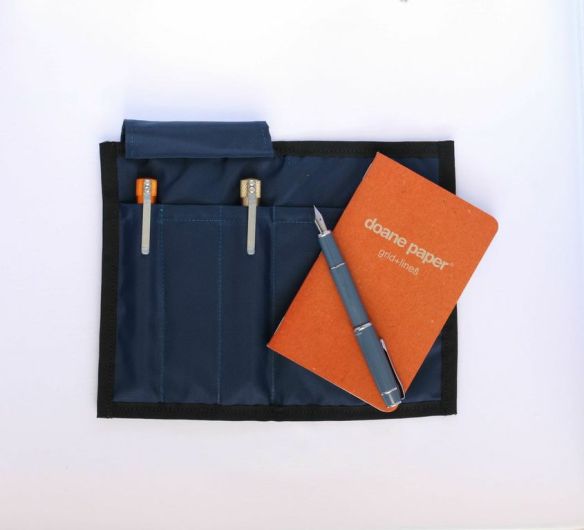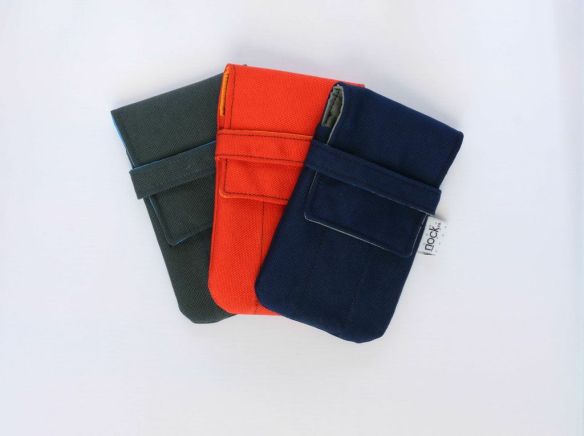I’ve been waiting with bated breath for the Nock Co. product launch, a collection of pen and writing tool cases created by my pal Brad Dowdy of The Pen Addict and Jeffrey Bruckwicki from Old Fourth Tailoring. Well, today’s the big day!
There are seven products in the initial Nock Co. line. Here’s a quick highlight: the Hightower which is designed to hold three pens and a pocket-sized notebook like Field Notes; the Brasstown zippered roll case which is a 6-pen roll that fits into a zip pouch; the Lookout which is a 3-pen holster case, and the Chimneytop which is a single piece zipper pouch that will hold six or seven writing tools or other daily carry items. There’s also the Maryapple and the Sassafras which are variations on the pen + notebook concept (either two slots for notebooks or slots on both the left and right for pens).
The color options for all the products are navy exterior with a gray interior, orange-on-orange (Brad’s favorite colors!) and gray with a sky blue lining. Sadly, there are no green options…yet. All the products are made from heavy-duty 1000 denier nylon exterior coated with a water-resistant DWR and lined with pack cloth.
There is also a special Kickstarter edition of the Hightower in peacock blue.
The most appealing Kickstarter option is the $75 option which will get you one of each of the initial seven products offered. That’s essentially $10.75 per case which is ridiculously cheap. Most of the pen cases sold on the market start at $15 and go up from there.
Nock Co.’s Kickstarter products are expected to start shipping in January of 2014. And of course, all the products are made in the USA.






















